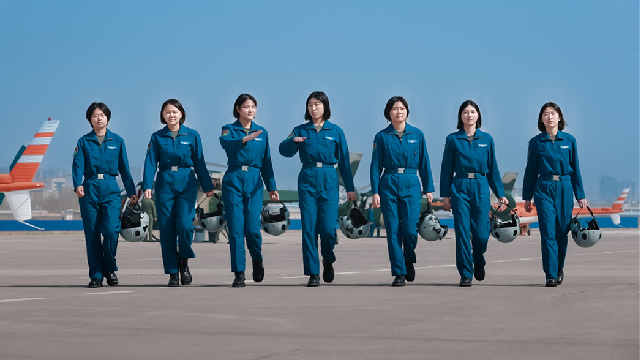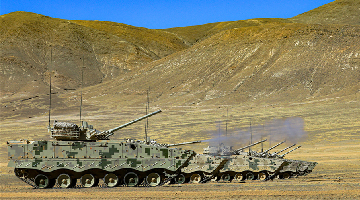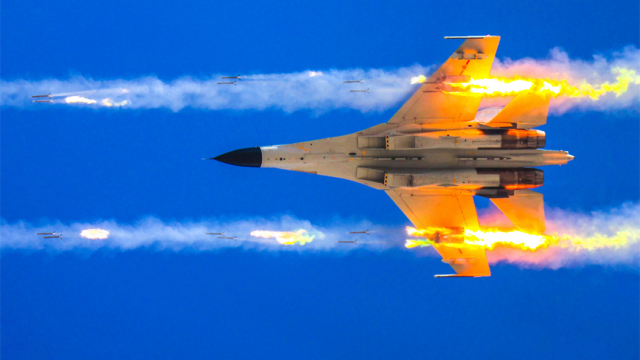Editor's note: Azhar Azam works in a private organization as a market & business analyst and writes about geopolitical issues and regional conflicts. The article reflects the author's opinion, and not necessarily the views of CGTN.
U.S. bitterness towards China is progressively sharpening. Every other month, it releases a Beijing-targeted report about growing threats from China, its trade or human rights practices, or any other issue that could blight Chinese national integrity.
So is the case with the latest U.S. Department of Defense (DOD)'s report to Congress that “exhumes” a Chinese military-political axis between the People's Liberation Army (PLA) and the Communist Party of China (CPC).
The report whispered that on the military front, the PLA is focusing on the development of psychological, public opinion and legal warfare to conduct influence operations against the media, cultural, business, academic and policy communities of the U.S. and other countries.
And on the political side, the CPC is conditioning the world to accept China's narrative on the Belt and Road Initiative (BRI) and its territorial and maritime claims in the South China Sea, consequently to ensure CPC rule and secure China's status as a great power particularly in the Indo-Pacific (Asia-Pacific) region.
Interestingly, the reproval came from a state that has a long history of these kinds of hybrid maneuvers such as propaganda campaigns, disseminating false information to gain public opinion, and improvising domestic and internal laws to “coerce” the support of United Nations and other foreign countries.

Afghanistan and Iraq are the two foremost examples of how the White House-Pentagon conjointly used media to spread disinformation and exploited international laws to influence national and global public opinion and forced them to believe that Kabul was harboring terrorists and Baghdad had weapons of mass destruction (WMDs).
Nearly two decades later, the U.S. realized that its intelligence information about Iraqi WMDs was based on unreliable documents while it also realized the importance of Afghan Taliban in Afghan politics and attaining sustainable peace in the country.
The U.S. is now going after China but it knows very well that the PLA is terribly stronger than those of Afghan and Iraqi militaries, and also that China can't be isolated as the economic survival of even some of the developed economies are tied to it.
So, the only solution to weaken Beijing is through creating resentment against China in its friendly countries and also by trying to make PLA controversial across the world. The U.S., however, needs the support of the media (both print and television) to “manufacture” public opinion and the support of Congress to legislate in a way that discourages any trade and cooperation with China.
But unfortunately to the U.S., the institutions it is relying on to besmirch Beijing are already losing the trust of the American people. Congress, which is supposed to be a highly dignified public office, as a matter of fact, is the least-trusted institution in the country, followed by television news and newspapers.
Although in its report, DOD is very concerned about PLA's influence on media, the claims of U.S. media to be free and vibrant were fizzled out after CNN commentator Marc Lamont Hill was fired by the cable news network within 24 hours of his pro-Palestinian speech at the United Nations.
Similarly, Trump has been accusing China of meddling in the U.S. midterm elections with the aim of damaging him politically and the use of American media to influence foreign opinion. But he ignores the facts that several publications and broadcasters such as Voice of America (VOA) are supported by his country.
Ironically in 2018, the Broadcasting Board of Governors that oversees VOA and other TV and radio networks in Middle East and Cuba requested 685.1 million U.S. dollars from Congress for what it described as countering Russian misinformation, enhancing programming for the Democratic People's Republic of Korea audiences, and meeting U.S. strategic objectives against China and other countries “that do not share American values (and) are attempting to make further inroads."
The commentaries and opinions of most of the U.S. media outlets are determined to prove that China first politically tempts the foreign countries towards its BRI, and once they are caught in a “debt trap, it uses military to control their strategic assets and expand its influence."
Realistically any country, with hundreds of billions of dollars in mega infrastructure projects such as BRI, needs a robust and intelligent military to protect its national investments. In China's case, the onus of protecting BRI sits on the PLA and any concept of Chinese increased militarization should be measured in this contextual and not necessarily with methodical skepticism.
Also, if PLA is striving for global Chinese domination by building military bases, how could the DOD get away from the U.S. martial presence worldwide that comprises about 4,800 defense sites in more than 160 countries in all the seven continents of the world? It is due to the binding U.S. regulation that countries like Japan cannot maintain their own military and have to rely on paid protection of the U.S.
Obviously, the U.S. envisages that PLA is growing into a formidable military force that could pose a real threat to its global military domination and most importantly, will be capable of securing Chinese national interests overseas.









